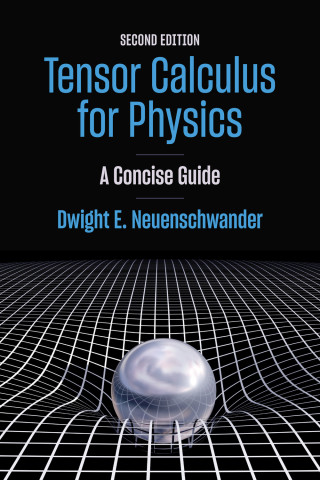
Reviews
A friendly introduction to the subject—no sentence is terse, and in fact useful additional statements are sprinkled throughout an argument... Suitably chosen examples are given throughout the text to illustrate the definitions, proofs and arguments, and there are also plenty of exercises at the end of each chapter for the reinforcement of understanding. It is an excellent text for a university course.
The utmost detailed presentation of the core material, the wealth of illustrating examples, and the many outlooks for further study make this excellent algebra primer a highly welcome, useful and valuable addition to the abundant textbook literature in the field.
Book Details
Preface
1. Abstract Algebra and Algebraic Reasoning
1.1. Abstract Algebra
1.2. Algebraic Structures
1.3. The Algebraic Method
1.4. The Standard Number Systems
1.5. The Integers and Induction
1.6. Exercises
2
Preface
1. Abstract Algebra and Algebraic Reasoning
1.1. Abstract Algebra
1.2. Algebraic Structures
1.3. The Algebraic Method
1.4. The Standard Number Systems
1.5. The Integers and Induction
1.6. Exercises
2. Algebraic Preliminaries
2.1. Sets and Set Theory
2.1.1. Set Operations
2.2. Functions
2.3. Equivalence Relations and Factor Sets
2.4. Sizes of Sets
2.5. Binary Operations
2.5.1. The Algebra of Sets
2.6. Algebraic Structures and Isomorphisms
2.7. Groups
2.8. Exercises
3. Rings and the Integers
3.1. Rings and the Ring of Integers
3.2. Some Basic Properties of Rings and Subrings
3.3. Examples of Rings
3.3.1. The Modular Rings: The Integers Modulo n
3.3.2. Noncommutative Rings
3.3.3. Rings Without Identities
3.3.4. Rings of Subsets: Boolean Rings
3.3.5. Direct Sums of Rings
3.3.6. Summary of Examples
3.4. Ring Homomorphisms and Isomorphisms
3.5. Integral Domains and Ordering
3.6. Mathematical Induction and the Uniqueness of Z
3.7. Exercises
4. Number Theory and Unique Factorization
4.1. Elementary Number Theory
4.2. Divisibility and Primes
4.3. Greatest Common Divisors
4.4. The Fundamental Theorem of Arithmetic
4.5. Congruences and Modular Arithmetic
4.6. Unique Factorization Domains
4.7. Exercises
5. Fields: The Rationals, Reals and Complexes
5.1. Fields and Division Rings
5.2. Construction and Uniqueness of the Rationals
5.2.1. Fields of Fractions
5.3. The Real Number System
5.3.1. The Completeness of R (Optional)
5.3.2. Characterization of R (Optional)
5.3.3. The Construction of R (Optional)
5.3.4. The p-adic Numbers (Optional)
5.4. The Field of Complex Numbers
5.4.1. Geometric Interpretation
5.4.2. Polar Form and Euler's Identity
5.4.3. DeMoivre's Theorem for Powers and Roots
5.5. Exercises
6. Basic Group Theory
6.1. Groups, Subgroups and Isomorphisms
6.2. Examples of Groups
6.2.1. Permutations and the Symmetric Group
6.2.2. Examples of Groups: Geometric Transformation Groups
6.3. Subgroups and Lagrange's Theorem
6.4. Generators and Cyclic Groups
6.5. Exercises
7. Factor Groups and the Group Isomorphism Theorems
7.1. Normal Subgroups
7.2. Factor Groups
7.2.1. Examples of Factor Groups
7.3. The Group Isomorphism Theorems
7.4. Exercises
8. Direct Products and Abelian Groups
8.1. Direct Products of Groups
8.1.1. Direct Products of Two Groups
8.1.2. Direct Products of Any Finite Number of Groups
8.2. Abelian Groups
8.2.1. Finite Abelian Groups
8.2.2. Free Abelian Groups
8.2.3. The Basis Theorem for Finitely Generated Abelian Groups
8.3. Exercises
9. Symmetric and Alternating Groups
9.1. Symmetric Groups and Cycle Structure
9.1.1. The Alternating Groups
9.1.2. Conjugation in Sn
9.2. The Simplicity of An
9.3. Exercises
10. Group Actions and Topics in Group Theory
10.1. Group Actions
10.2. Conjugacy Classes and the Class Equation
10.3. The Sylow Theorems
10.3.1. Some Applications of the Sylow Theorems
10.4. Groups of Small Order
10.5. Solvability and Solvable Groups
10.5.1. Solvable Groups
10.5.2. The Derived Series
10.6. Composition Series and the Jordan-Holder Theorem
10.7. Exercises
11. Topics in Ring Theory
11.1. Ideals in Rings
11.2. Factor Rings and the Ring Isomorphism Theorem
11.3. Prime and Maximal Ideals
11.3.1. Prime Ideals and Integral Domains
11.3.2. Maximal Ideals and Fields
11.4. Principal Ideal Domains and Unique Factorization
11.5. Exercises
12. Polynomials and Polynomial Rings
12.1. Polynomials and Polynomial Rings
12.2. Polynomial Rings over a Field
12.2.1. Unique Factorization of Polynomials
12.2.2. Euclidean Domains
12.2.3. F[x] as a Principal Ideal Domain
12.2.4. Polynomial Rings over Integral Domains
12.3. Zeros of Polynomials
12.3.1. Real and Complex Polynomials
12.3.2. The Fundamental Theorem of Algebra
12.3.3. The Rational Roots Theorem
12.3.4. Solvability by Radicals
12.3.5. Algebraic and Transcendental Numbers
12.4. Unique Factorization in Z[x]
12.5. Exercises
13. Algebraic Linear Algebra
13.1. Linear Algebra
13.1.1. Vector Analysis in R3
13.1.2. Matrices and Matrix Algebra
13.1.3. Systems of Linear Equations
13.1.4. Determinants
13.2. Vector Spaces over a Field
13.2.1. Euclidean n-Space
13.2.2. Vector Spaces
13.2.3. Subspaces
13.2.4. Bases and Dimension
13.2.5. Testing for Bases in Fn
13.3. Dimension and Subspaces
13.4. Algebras
13.5. Inner Product Spaces
13.5.1. Banach and Hilbert Spaces
13.5.2. The Gram-Schmidt Process and Orthonormal Bases
13.5.3. The Closest Vector Theorem
13.5.4. Least-Squares Approximation
13.6. Linear Transformations and Matrices
13.6.1. Matrix of a Linear Transformation
13.6.2. Linear Operators and Linear Functionals
13.7. Exercises
14. Fields and Field Extensions
14.1. Abstract Algebra and Galois Theory
14.2. Field Extensions
14.3. Algebraic Field Extensions
14.4. F-automorphisms, Conjugates and Algebraic Closures
14.5. Adjoining Roots to Fields
14.6. Splitting Fields and Algebraic Closures
14.7. Automorphisms and Fixed Fields
14.8. Finite Fields
14.9. Transcendental Extensions
14.10. Exercises
15. A Survey of Galois Theory
15.1. An Overview of Galois Theory
15.2. Galois Extensions
15.3. Automorphisms and the Galois Group
15.4. The Fundamental Theorem of Galois Theory
15.5. A Proof of the Fundamental Theorem of Algebra
15.6. Some Applications of Galois Theory
15.6.1. The Insolvability of the Quintic
15.6.2. Some Ruler and Compass Constructions
15.6.3. Algebraic Extensions of R
15.7. Exercises
Bibliography
Index





